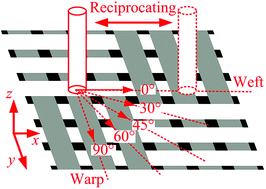Reciprocating sliding wear of hybrid PTFE/Kevlar fabric composites along different orientations
Abstract
The dry reciprocating sliding properties of two weaves, reinforced twill 2/2 (RT) and basket weave 3/3 (BW), of hybrid PTFE/Kevlar fabric composites were investigated using a pin-on-flat configuration along the selected orientations of 0°, 30°, 45°, 60° and 90° which were the reciprocating sliding directions of pin to weft yarn (PTFE). The morphologies of the worn surfaces of the composites were analyzed by means of Scanning Electron Microscopy (SEM). The PTFE transfer film and F element on the counterface were observed and analyzed respectively by SEM and Energy Dispersive X-ray Spectroscopy (EDS). The results showed that the orientations and weaves played an important role in the friction reduction and antiwear properties of PTFE/Kevlar fabric composites. Contrasting to BW PTFE/Kevlar fabric composites, RT PTFE/Kevlar fabric composites showed significant advantages in the antiwear performance along all the selected orientations. The main damage forms of PTFE/Kevlar fabric composites include fatigue wear and adhesive wear of the polymer matrix, and lifted, wrinkled and breakage of the fibers.



 Please wait while we load your content...
Please wait while we load your content...